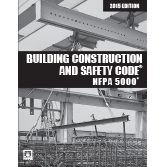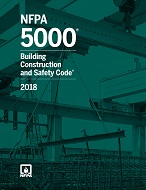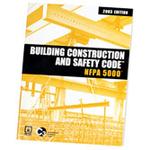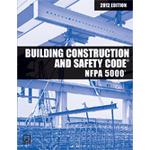
Click here to purchase
Use the 2015 NFPA 5000®: Building Construction and Safety Code® to safeguard life, health, property, and public welfare.
Applicable to every occupancy type and building use, NFPA 5000 presents the latest requirements for construction, protection, and occupancy features needed to safeguard life, health, property, and public welfare and to minimize injuries. The 2015 edition provides minimum design provisions used to regulate and control the permitting, design, construction, quality of materials, use and occupancy and location of all buildings and structures and certain equipment.
NFPA 5000 also addresses a broad range of natural and manmade hazards including fire, earthquake, wind, flood, and similar natural hazard and environmental events.
Major changes in the 2015 edition of NFPA 5000 recognize emerging technologies and trends and improve safety.
- Updates on accessibility issues align NFPA 5000 with Department of Justice ABA/ADA provisions for accessibility.
- Added provision recognizes the use of cross-laminated timber (CLT) as an option for heavy timber construction of walls, floors and roof decks — reflecting growing use of CLT as an alternative to dimensional or sawn heavy timber construction.
- New explicit rules govern security access turnstiles. The 2015 NFPA 5000 allows the use of such devices in places like office buildings that can restrict access into the space but allow free access when exiting.
- New mandate for installation of carbon monoxide detectors and alarms in educational and day care settings — expanding the occupancies where CO detection is required.
Other changes improve quality of life in the health care setting.
As begun in 2012, the 2015 NFPA 5000 continues to make strides in permitting the health care setting, including long-term care and nursing home care, to be made more homelike. Changes make the Code consistent with Facility Guidelines Institute (FGI) criteria as well as federal programs and issues that are promulgated at the national level.
- Health care occupancy provisions allow nursing home minimum corridor width to be reduced within small smoke compartments.
- Provisions added to permit doors to be disguised with murals for settings like memory care and dementia units.
Product Details
- Published:
- 09/03/2014
- ISBN(s):
- 9781455909155
- Number of Pages:
- 646



